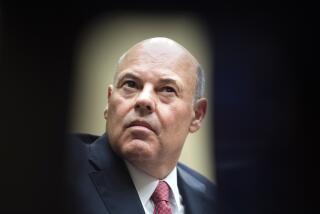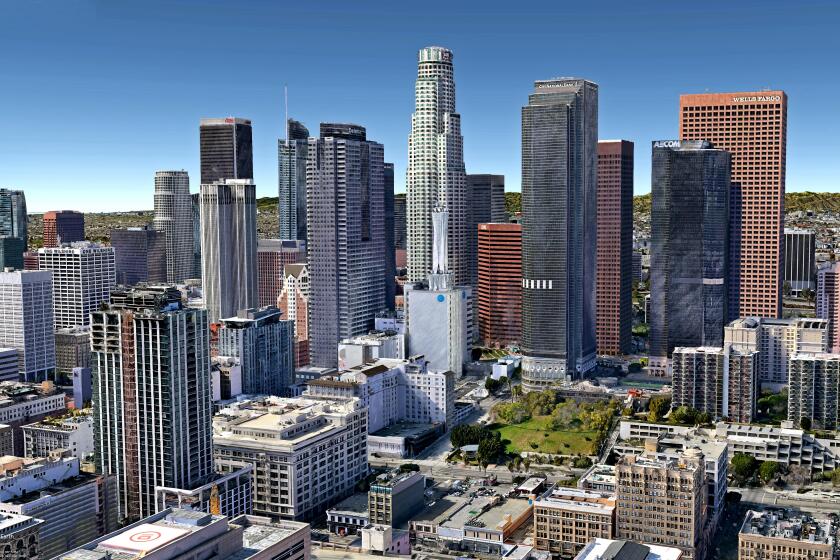Many Phony Products Look Like the Real Thing : Trade: Desktop publishing has made it easier for counterfeiters to reproduce high-quality packaging for fake goods.
A fake product used to be considered good when the brand name was spelled right. Now, the top-notch international counterfeiters can duplicate everything from product codes to government certificates that verify the good’s authenticity.
Quantity is increasing along with quality--the international trade in phony products is now estimated to be worth $100 billion a year.
“One of the alarming trends that we’re seeing more of these days is that counterfeit products are becoming more sophisticated in their external appearance,” said Peter Lowe, assistant director of the Counterfeiting Intelligence Bureau, on the Bloomberg Forum.
The U.K.-based bureau is a unit of the International Chamber of Commerce. It collects information on the trade in sham goods, then passes it on to the bona fide manufacturers and law enforcement agencies around the world. The bureau also advises companies on how to protect themselves from imitation.
Counterfeiters are getting better because advances in photocopying and desktop publishing have made labeling and packaging easier to reproduce, Lowe said. Even security technology such as holograms designed to foil imitators is being pirated.
“So long as the packaging looks OK, people will buy,” said Ed Chicken, an officer with the U.K.’s Institute of Trading Standards Administration.
A perfectly reproduced videocassette box or compact disc case may contain a product of abysmal quality or even a complete blank. “The nice thing for counterfeiters is no one ever tries to return something,” Chicken said.
The trade in fake goods now encompasses everything from luxury products and tea bags to compact discs, computer software, vehicle parts and medicine. Lowe’s bureau believes that counterfeiting accounts for about 5% of world trade.
While most counterfeit goods can endanger a legitimate company’s bottom line, they can also be downright life threatening. Lowe cites these examples:
* In March, 600 light planes were grounded when a shipment of parts for Textron Inc.’s Lycoming engines were found to be fake.
* In 1993, a group selling imitation parts for Pratt & Whitney jet engines was uncovered.
* Five years ago, 109 Nigerian children died after taking a phony acetaminophen preparation that contained diethylene glycol, the basis of antifreeze.
Many people are happy to buy knockoffs, believing the fakes may sacrifice some manufacturing or material quality but are cheaper because the illegal producer saves on expensive offices, advertising and huge mark-ups.
“There’s a strange ambivalence in the attitude of the public to counterfeits,” Lowe said. They think that if it looks like a duck and quacks like a duck, then it is a duck . . . or a Cartier watch or Louis Vuitton handbag.
“But they’d be horrified if they knew that the aircraft they were sitting on contained fake aircraft parts, or the pharmaceuticals they were taking were fake and completely worthless,” Lowe said.
While a buyer probably knows, or at least suspects, that the designer watch being offered in a market stall at one-tenth the regular retail price isn’t what it seems, counterfeit products passed off as the real thing are increasingly finding their way into the legitimate distribution system.
“To maximize their profit and minimize their risk, [counterfeiters] will very often charge at or close to the price of the genuine article,” Lowe said.
Manufacturers and the packaging industry are looking at ever more technological advances to foil impostures, such as DNA coding and inserting identifying microchips.
Of course, there’s the risk that even those methods will be duplicated by the crooks, Chicken said.
Sometimes the packaging of fakes looks like the real thing because it is the real thing, stolen from a warehouse.
“Looking at security from beginning to end is so important, and something that quite a lot of businesses fall down at,” Chicken said.
Lowe says that governments are becoming more determined to tackle counterfeiting, which legitimate businesses say destroys confidence in branded products and costs money and jobs, so much so that intellectual property rights violations are being debated in World Trade Organization trade negotiations.
Consumers also need to be made more aware of the implications of buying fakes, including the involvement of organized crime and terrorist groups in the trade, Lowe said.
“There needs to be a stronger message sent by governments to consumers to indicate that buying counterfeit goods is bad for industry, is bad for everyone,” he said.
More to Read
Inside the business of entertainment
The Wide Shot brings you news, analysis and insights on everything from streaming wars to production — and what it all means for the future.
You may occasionally receive promotional content from the Los Angeles Times.










